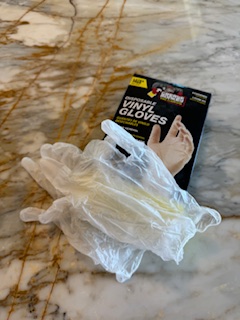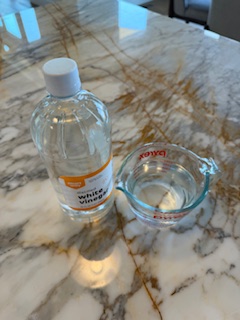 Follow my blog with Bloglovin
Follow my blog with Bloglovin
For sparkling clean windows, choosing the right window cleaning solution is crucial. There’s more to it than just wiping down the glass; the formula you use can make a big difference.
A high-quality window cleaning solution can leave your windows crystal clear, streak-free, and gleaming.

Many might wonder about the ingredients in commercial window cleaning solutions or if a DIY alternative could work just as well. Each type has its merits, and understanding which one suits your needs can save both time and effort.
Whether it’s a store-bought bottle or a homemade mix, the goal remains the same—spotless windows.
Proper tools and techniques also play a significant role in effective window cleaning. It’s not just about the solution; the method of application and the tools used can either enhance or hinder your efforts.
Using the right combination of solution, tools, and techniques ensures your windows will not only look clean but stay cleaner longer.
Key Takeaways
- Quality solutions result in streak-free, clear windows.
- DIY and commercial solutions each have their benefits.
- Proper tools and techniques are essential for effective cleaning.
The Basics of Window Cleaning
The key elements in window cleaning include understanding the importance of pH levels in solutions and how different types of water can impact the cleaning process.
Understanding pH Levels in Cleaning Solutions
pH levels determine the acidity or alkalinity of a window cleaning solution. A balanced pH, typically around 7, is neutral.
Acidic solutions have pH levels below 7, whereas alkaline solutions have pH levels above 7.
Alkaline solutions are great for handling greasy and oily stains, making them suitable for kitchen areas. Acidic solutions, on the other hand, can effectively remove mineral deposits and rust, so they are often used for bathroom windows.
Maintaining an appropriate pH balance helps prevent damage to window materials. Acidic solutions can corrode metals, while overly alkaline solutions may leave residues and smudges on glass.
Using a pH-neutral cleaner ensures safety and efficacy.
Water Types and Their Impact on Cleaning
The type of water used affects the window cleaning results.
Hard water contains high levels of minerals like calcium and magnesium, which can leave spots and streaks after drying.
Soft water, on the other hand, is free from these minerals and contributes to a streak-free finish. It is particularly useful for final rinsing.
Distilled water, which is free from impurities, provides the best results for window cleaning. It ensures no residue is left behind, making it ideal for achieving pristine, clear windows.
Regular tap water can be used for initial washing but may not be suitable for a spotless finish due to mineral content.
Consider using water softeners or distilled water for optimal results.
Ingredients in Window Cleaning Solutions
Window cleaning solutions contain various ingredients that work together to remove dirt, grime, and streaks. These solutions often balance between chemical effectiveness and safety, incorporating both natural and synthetic components. Additionally, certain additives further enhance their cleaning power.
Common Cleaning Agents
One of the primary components in many window cleaning solutions is isopropyl alcohol. This ingredient is known for its ability to effectively break down oils and evaporate quickly, leaving no streaks.
Ammonia is another frequent component, prized for its strong grease-cutting properties. However, ammonia can be irritating and should be used with caution.
Surfactants, such as sodium lauryl sulfate, lower the surface tension of water, which helps the cleaning solution spread and penetrate more effectively.
Natural vs. Chemical Components
Natural ingredients like vinegar and lemon juice are popular choices for eco-friendly window cleaners.
Vinegar, primarily acetic acid, efficiently dissolves mineral deposits and organic dirt without leaving residues.
Lemon juice adds a pleasant scent and mild acidity, boosting cleaning power.
In contrast, chemical components such as sodium hydroxide and ethylene glycol offer robust cleaning capabilities but come with potential health and environmental concerns.
Balancing these elements helps in creating a solution that is both effective and safer for users and the environment.
Additives for Enhanced Effectiveness
Some window cleaning solutions include antistatic agents to prevent dust from settling quickly on cleaned surfaces. This helps windows stay cleaner for longer periods.
Scented oils might be added to improve the smell of the solution, making the cleaning process more pleasant.
In cold climates, solutions may contain methanol or other antifreeze agents to prevent the product from freezing.
These additives cater to specific needs, enhancing the user experience and maintaining high performance of the cleaning solution.
DIY Window Cleaning Solutions
Creating your own window cleaning solutions at home can be cost-effective and eco-friendly. Here are some easy-to-follow recipes and important safety tips.
Recipes for Homemade Solutions
For a simple and effective cleaner, combine two cups of water, a quarter cup of white vinegar, and a half teaspoon of dish soap. This mixture works well for most windows and mirrors.

If you prefer a less acidic option, mix two cups of water with a quarter cup of rubbing alcohol and a half teaspoon of dish soap. This blend dries quickly and leaves a streak-free shine.
For extra sticky situations, use a paste made of baking soda and water. Apply it to tough spots, let it sit for a few minutes, then wipe clean.
Safety Tips for DIY Mixtures
Always label your homemade solutions clearly to avoid confusion. Store them away from children and pets.
When mixing ingredients, wear gloves and work in a well-ventilated area to avoid inhaling fumes, especially with alcohol or vinegar-based cleaners.

Never mix bleach with vinegar or ammonia; this can produce dangerous gases. Stick to simple, non-toxic ingredients to ensure safety.
Keep your cleaning sessions short and take breaks to reduce exposure to any fumes. Ventilate the room by opening windows or using fans during and after cleaning.
Commercial Window Cleaning Solutions
Commercial window cleaning solutions need to address the unique challenges faced by businesses. Selecting the right product can greatly enhance efficiency and ensure streak-free, sparkling results.
Selecting the Right Product
Choosing the appropriate window cleaning product is crucial for commercial spaces. Products vary widely, and the selection depends on factors like glass type, environmental impact, and ease of use.
Some products are designed specifically for high-rise buildings, requiring less frequent application. Others might prioritize being eco-friendly, reducing harm to the environment.
Businesses should consider cost-effectiveness too. Bulk purchasing options can save money for large-scale operations.
It’s also vital to check for streak-free formulas to maintain a professional appearance.
Tools and Techniques for Window Cleaning
To achieve sparkling clean windows, using the right tools and techniques is crucial. This involves understanding the importance of different cleaning tools like squeegees, microfiber cloths, and methods for applying cleaning solutions.
Squeegees and Their Usage
A squeegee is one of the most essential tools in window cleaning. It typically consists of a handle and a flat, rubber-edged blade.
When used correctly, it can quickly remove soapy water and leave the surface clear of streaks.
To maximize effectiveness, hold the squeegee at a slight angle and make smooth, consistent strokes, either vertically or horizontally.
Regularly wiping the blade with a clean cloth can prevent drips and ensure a streak-free finish. Choosing a squeegee with a comfortable grip can also help during extended cleaning sessions.
The Role of Microfiber Cloths
Microfiber cloths are indispensable in window cleaning for their high absorbency and softness. They are excellent for wiping away dust, smudges, and fingerprints without scratching the glass.
Using microfiber cloths ensures that cleaning solutions and residues are effectively removed.
These cloths are reusable and can be washed multiple times, making them an eco-friendly option.
For the best results, use a dry microfiber cloth after the squeegee to remove any remaining water spots.
Bucket vs. Spray Bottle Methods
When it comes to applying cleaning solutions, methods can vary significantly.
A bucket filled with a cleaning solution allows for easy dunking of the squeegee and cloth. This method is ideal for larger surfaces and commercial cleaning. It ensures the solution is well-distributed and can cover more area quickly.
In contrast, a spray bottle method is more convenient for smaller windows or quick touch-ups.
It allows for precise application of the solution and minimizes waste. By spraying the solution directly onto the glass, it can help in controlling the amount used and ensuring thorough cleaning.
Using a combination of both methods can provide flexibility depending on the size and number of windows being cleaned.
Application and Best Practices
Ensuring windows are spotless requires proper techniques, understanding different types of stains, and knowing how often to clean them for optimal results.
Techniques for Streak-Free Results
To achieve streak-free windows, use a quality squeegee and microfiber cloths.
Start by dissolving dirt and grime with a gentle window cleaning solution.
When using a squeegee, drag it smoothly from top to bottom, wiping the blade after each pass.
Avoid cleaning in direct sunlight, as it can cause the solution to dry too quickly, leaving streaks.
Another effective method involves the two-bucket technique. Use one bucket for soapy water and another for rinse water to keep your cleaning tools clean, reducing streaks.
Finally, make sure to buff the edges and corners with a microfiber cloth.
Dealing with Hard-to-Remove Stains
For tough stains like bird droppings, use a mixture of vinegar and water.
Spray the mixture on the stain, let it sit for a few minutes, and then scrub gently with a non-abrasive pad.
For stubborn mineral deposits from hard water, a solution of equal parts water and vinegar can be effective.
For adhesive residues or sticky stains, use a small amount of rubbing alcohol on a cloth.
Make sure to rinse thoroughly after treatment to avoid any residue.
Frequency of Window Cleaning
Residential windows generally need cleaning every six months.
Homes near busy roads or construction sites may require seasonal cleaning to combat extra dust and grime.
Interior windows typically need less frequent attention but should still be checked for smudges or dust buildup.
Commercial buildings often follow a bi-monthly schedule to maintain a professional appearance.
High-traffic areas like storefronts might need even more frequent upkeep.
Keeping a regular schedule prevents the buildup of dirt and makes each cleaning session easier and quicker.
Safety Considerations for Window Cleaning
When cleaning windows, it’s essential to handle chemicals properly, use protective gear, and take special precautions when working on high windows.
Proper Handling of Chemicals
Window cleaning solutions often contain chemicals that must be used and stored correctly.
Always read the labels and follow manufacturer instructions. Wear gloves to protect skin from irritation.
Store chemicals in a cool, dry place, away from children and pets. Use only the recommended amount to avoid unnecessary exposure.
Mixing different cleaning agents is not advised, as it can cause dangerous reactions.
Protective Gear and Equipment
Protective gear is crucial to ensure your safety.
Wear gloves to prevent direct contact with chemicals and safety goggles to protect eyes from splashes. I have to admit that I often forget about the gloves.
Nonslip footwear can prevent falls, especially when working on ladders or slippery surfaces. Use a sturdy ladder that meets safety standards, and ensure it’s placed on an even surface.
Precautions for High Windows
For high windows, use extension poles or squeegees designed for extended reach to minimize the need for climbing.
When ladder use is necessary, ensure it’s stable and someone is nearby for assistance.
Using a harness can provide additional safety for very high windows. Avoid leaning out too far or over-reaching, as it increases the risk of falls and injuries.
Environmental and Health Concerns
Window cleaning solutions have important implications for the environment and human health.
It’s crucial to choose products that are safe and effective.
Eco-Friendly Cleaning Solutions
Using eco-friendly cleaning solutions can significantly reduce harmful environmental impacts.
Many conventional window cleaning solutions contain chemicals that contribute to water pollution when washed away.
Eco-friendly products often use biodegradable ingredients, which break down naturally and reduce pollution.
They are also less likely to harm wildlife.
Products certified by organizations like Green Seal or the EPA Safer Choice program can be reliable choices.
Consumers should look for labels that indicate low toxicity and reduced environmental impact.
An easy way to start is by using homemade solutions like vinegar and water. These are not only safe for the environment but also cost-effective.
Health Impacts of Cleaning Agents
Conventional window cleaners can contain ammonia and other volatile organic compounds (VOCs).
These substances can cause respiratory irritation and other health issues.
Ammonia, for instance, can be irritating to the eyes and lungs, especially for individuals with asthma.
Using natural or low-VOC cleaning agents can minimize these risks.
Labels on cleaning products should be checked for warnings and ingredient lists.
Choosing products with simple, non-toxic ingredients like plant-based surfactants can make a difference.
It’s essential for anyone using these products to follow the instructions carefully to avoid unnecessary exposure.
Storage and Disposal of Window Cleaning Solutions
Storing and disposing of window cleaning solutions properly ensures safety and maintains product effectiveness.
Incorrect handling can lead to hazards or degraded performance.
Proper Storage Techniques
To maintain the quality and safety of window cleaning solutions, store them in cool, dry places away from direct sunlight.
Ensure containers are tightly sealed to prevent leaks and contamination. Label each container clearly with its contents and usage instructions.
For added safety, keep products out of reach of children and pets.
Avoid storing large quantities; purchase only what you need for immediate use. Use shelving that supports the weight of the containers and prevents spills.
Disposal of Chemical Solutions
Dispose of window cleaning solutions according to local regulations.
Do not pour them down the drain or in outdoor areas, as this can harm the environment. Check labels for specific disposal instructions.
Contact local waste disposal facilities for information on hazardous waste collection sites.
If the window cleaning solution container is empty, rinse it thoroughly before recycling or disposing of it in the trash.
Troubleshooting Common Issues
Streaks on Windows
Streaks can be a pesky problem. Use a microfiber cloth and make sure to dry the windows completely. Avoid using paper towels, as they tend to leave lint.
White Spots
White spots typically indicate mineral deposits. A vinegar and water solution works wonders. Mix equal parts of both, spray on the area, and wipe with a soft cloth.
Cloudy Windows
Cloudiness might mean residue from commercial cleaners. Try switching to a homemade solution of water, vinegar, and a little dish soap. Rinse thoroughly and dry with a squeegee.
Smudges and Fingerprints
Smudges and fingerprints can often be cleaned with a small amount of rubbing alcohol on a cloth. Buff the area to ensure it’s clear.
Squeegee Streaks
Ensure the squeegee blade is clean and in good condition. Wipe the blade after each pass to avoid leaving marks. Nothing worse than working hard and leaving a mark.
Detergent Build-up
Too much detergent can cause a filmy build-up. Rinse the windows well after washing to avoid this issue.
Removing Stickers or Tape Residue
A mixture of warm water and baking soda can help. Apply to the residue, let it sit for a few minutes, and then gently scrub.
Frames and Sills
Frames and sills often collect dirt and grime. A quick wipe with a damp cloth followed by a dry cloth can keep them looking neat and clean.
Streaky Solutions
Sometimes the cleaning solution itself can be the culprit. If your windows aren’t coming out clear, you might want to try a different recipe or brand.
Drying Issues
Drying windows with direct sunlight or during high humidity can lead to streaks. If possible, clean during cooler, overcast days.
Frequently Asked Questions
Learn about the best ingredients for DIY window cleaning solutions, the effectiveness of using vinegar and Dawn, secrets for streak-free results, and professional tips.
What ingredients do I need to make a homemade window cleaning solution?
To create an effective homemade window cleaning solution, you need water, white vinegar, and rubbing alcohol. Some recipes may also include dish soap or essential oils.
Can I use vinegar and Dawn to create an effective window cleaner?
Yes, mixing vinegar and Dawn dish soap can make an effective window cleaner. Combine equal parts of water and white vinegar, then add a few drops of Dawn dish soap for a powerful solution. Check out this article for a recipe.
What is the secret to a streak-free window cleaning using a squeegee?
The secret to streak-free windows is using a high-quality squeegee and ensuring the blade is clean. Start at the top corner of the window and use smooth, even strokes. Wipe the squeegee blade with a clean cloth after each stroke.
How do professionals mix their own window cleaning solutions?
Professionals often use a mix of water, white vinegar, and dish soap. Some may add small amounts of ammonia or rubbing alcohol for enhanced cleaning power, but always in well-ventilated areas due to the fumes.
Which liquid solutions work best for cleaning outdoor windows?
For outdoor windows, a mixture of water, white vinegar, and a bit of dish soap works well. You can also use commercial window cleaners designed specifically for outdoor use.
What recipe can I follow for a safe and efficient window washing solution?
A safe and efficient recipe includes 2 cups of water, 1/4 cup of white vinegar, and 1/2 teaspoon of dish soap.
Mix these ingredients in a spray bottle and shake gently before using.
Hope you enjoyed this post about the many window cleaning solution options. There’e nothing I enjoy more than clean windows. Check out my DIY eyeglass cleaner, too.
Let me know how it worked for you!
Jenny

Leave a Reply